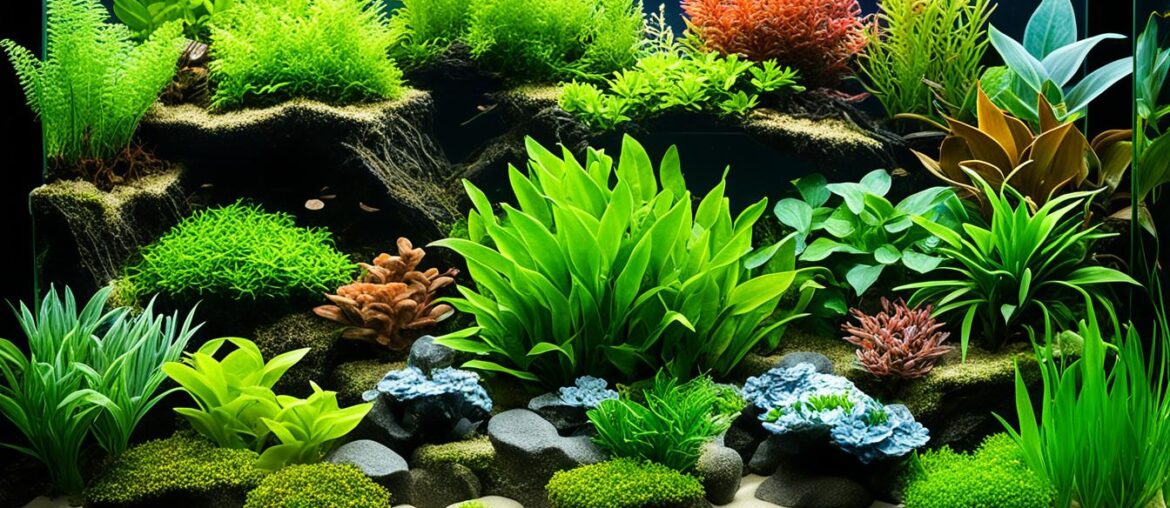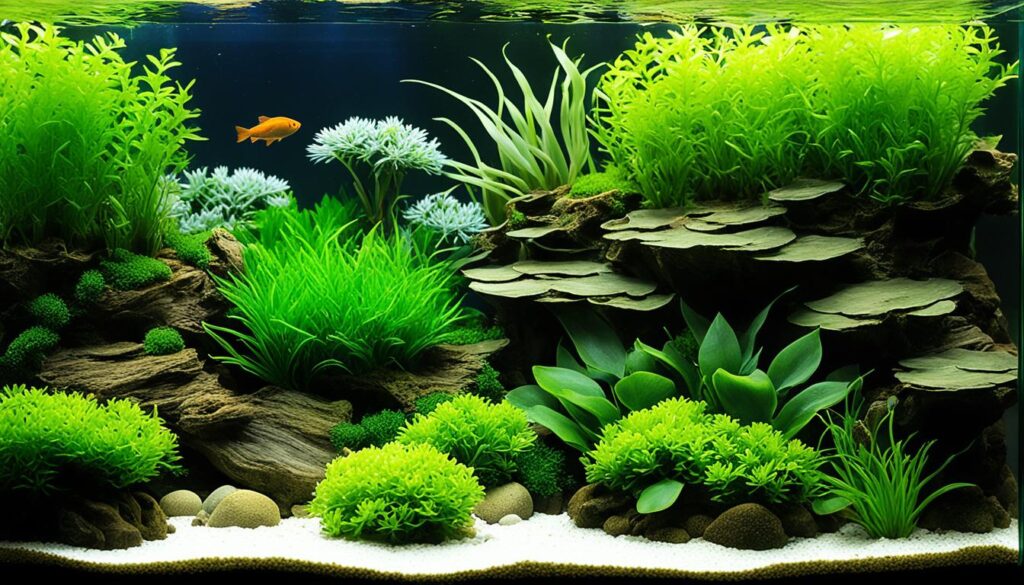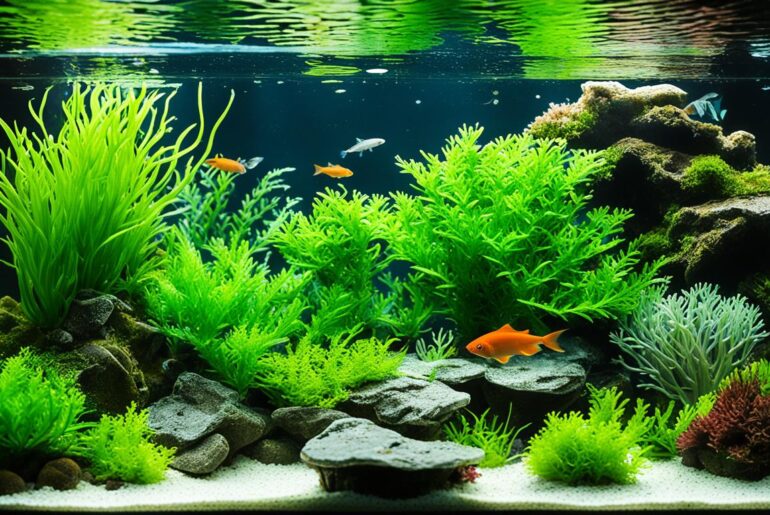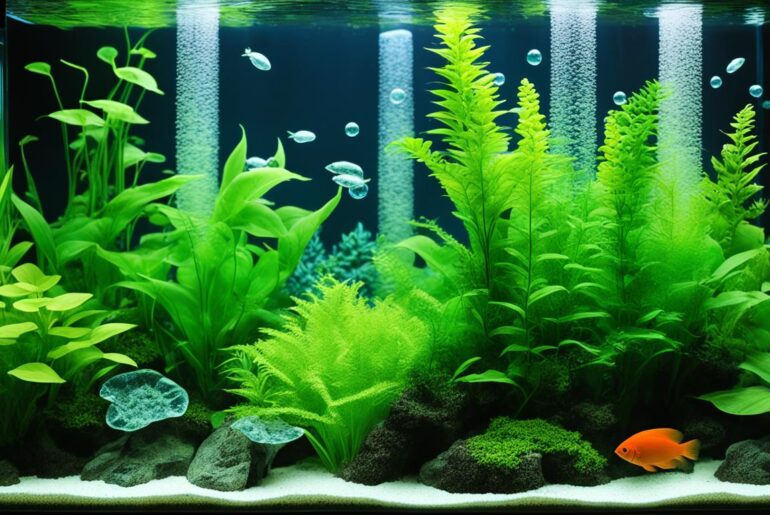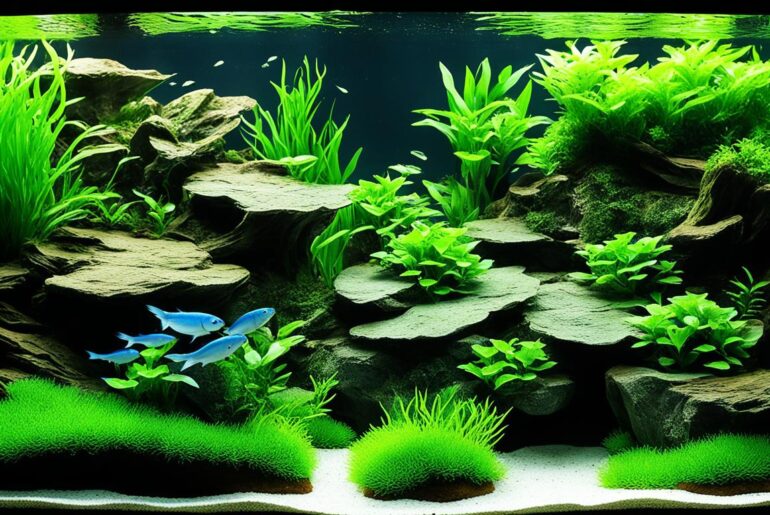As an avid aquarium enthusiast, I have always been captivated by the mesmerizing beauty of underwater gardens. Nothing compares to the joy of watching lush green plants sway gracefully in the currents, providing a natural habitat for my beloved fish. However, I must admit that my journey to achieving a flourishing planted aquarium was not without its challenges.
When I first started out, I struggled to find the right substrate for my aquatic plants. It seemed like a simple decision, but little did I know the impact it would have on the health and growth of my underwater garden. I spent countless hours researching and experimenting, trying different substrate types to find the one that would provide optimal conditions for my plants to thrive.
Through my trials and tribulations, I discovered the importance of choosing the right substrate for aquatic plants. It goes beyond aesthetics and plays a crucial role in providing essential nutrients, supporting root growth, and maintaining water chemistry. The right substrate can make all the difference between a lackluster aquarium and a vibrant, thriving underwater paradise.
Key Takeaways:
- Choosing the right substrate is crucial for the health and growth of aquarium plants.
- Substrates provide essential nutrients, support root growth, and maintain water chemistry in the tank.
- Experimenting with different substrate types can help determine the best option for your specific setup.
- Aquarium plants require a substrate that provides stability, moisture retention, and nutrient absorption.
- Consider factors such as plant type, fish species, and aesthetic preferences when selecting a substrate.
Fertilizing Substrate – Nutrition for medium-demanding plants
When it comes to promoting the health and growth of medium-demanding plants in your aquarium, a nutrient-rich plant substrate can make all the difference. By incorporating a fertilizing substrate as a base layer, you can provide essential nutrients that enhance plant growth rate and support optimal nutrient absorption. This section will explore the benefits of using a fertilizing substrate and how it can contribute to the overall success of your aquatic garden.
Unlike traditional substrates like gravel or sand, a fertilizing substrate acts as a nutrient-rich foundation for your plants to thrive. Placed underneath the top layer, the fertilizing substrate enriches the growth environment and provides extra nourishment to your plants. This promotes their health and encourages robust growth, leading to a lush and vibrant underwater landscape.
The amount of fertilizing substrate needed depends on the size of your aquarium. Fortunately, there are different package sizes available for small, medium, and large tanks, ensuring that you can find the perfect fit for your setup. By incorporating the right amount of soil, you can create an ideal foundation for your plants to flourish.
One highly recommended type of fertilizing substrate is clay-based, also known as aquarium plant soil or aqua-soil. Aqua-soils are specifically designed for plant keeping and aquascaping, offering a complete solution for your aquatic plants’ nutritional needs. Not only do they provide essential nutrients, but they also support the growth of beneficial bacterial colonies that break down organic debris into additional nutrients.
“Using a fertilizing substrate can significantly enhance the health and growth of your medium-demanding plants.”
Incorporating a fertilizing substrate in your aquarium not only benefits your plants but also contributes to the overall aesthetic appeal of your aquascape. With a thriving plant growth and vibrant foliage, your underwater garden will become a beautiful focal point in your home.
To visualize the impact of using a fertilizing substrate, refer to the table below:
| Benefit | Description |
|---|---|
| Promotes Plant Growth | The nutrient-rich substrate provides essential elements that enhance plant growth rate and overall health. |
| Optimizes Nutrient Absorption | The fertilizing substrate creates an environment where plants can efficiently absorb nutrients through their roots. |
| Supports Aquatic Ecosystem | The growth of beneficial bacterial colonies in the substrate helps break down organic debris, improving water quality and overall ecosystem balance. |
By incorporating a fertilizing substrate into your aquarium setup, you can provide the necessary nutrition for your medium-demanding plants, surpassing their growth expectations. This nutrient-rich base layer creates an environment that optimizes nutrient absorption and promotes healthy plant development.
Decorative sand for aesthetic purposes
In the world of aquascaping, decorative sand is a popular choice for creating stunning and visually captivating underwater landscapes. With its ability to mimic natural riverbeds, create realistic shorelines, or even build intricate paths, decorative sand offers endless possibilities for creating a captivating aquarium environment.
Aquascaping enthusiasts often opt for light-colored sands to achieve a naturalistic look, resembling the sandy shores of a pristine beach. The fine texture of decorative sand adds a touch of elegance and refinement to any aquarium, elevating the overall aesthetics of the underwater ecosystem.

However, it is important to note that decorative sands require regular maintenance to preserve their beauty. Light-colored sands have a tendency to accumulate dirt and can make algae growth more visible. It is essential to regularly clean and siphon the sand to remove any organic substances or debris that may have settled on its surface.
The compactness of fine substrates, including decorative sand, can present a challenge in maintaining a healthy biological ecosystem. These substrates can quickly become compacted, leading to a lack of oxygen circulation and the formation of anaerobic areas. Such conditions can be detrimental to the overall health and balance of the aquarium.
Despite these considerations, fine sand substrates are preferred by bottom-dwelling fish and shrimp. These aquatic inhabitants find comfort and pleasure in interacting with the fine particles, creating a more natural and enriching environment within the tank.
“The inclusion of decorative sand in aquascaping adds a touch of beauty and artistry to any aquarium, enhancing the visual appeal and overall enjoyment of the underwater world.” – AquaScapes Inc.
Bare-bottom tanks for breeding and quarantine
When it comes to breeding and quarantine tanks, bare-bottom tanks offer several advantages. These tanks, as the name suggests, have no substrate at the bottom, making them easy to clean and maintain. The absence of a substrate eliminates the risk of fish waste and uneaten food getting trapped, ensuring a pristine environment for your aquatic companions.
One of the key benefits of bare-bottom tanks is their ability to maintain water quality. Without a substrate to collect and hold debris, water flow becomes more efficient, pushing detritus directly into the filter. This ensures that harmful waste materials are efficiently removed from the tank, promoting the optimal health and well-being of your fish.
While bare-bottom tanks excel in functionality, they may not be as visually appealing as tanks with substrates. The bottom panel of the tank reflects light, creating a mirror-like effect that some aquarists find less aesthetically pleasing. However, if the primary purpose of your tank is breeding or quarantine, this trade-off is often considered worthwhile.
To keep bare-bottom tanks in top condition, it’s essential to siphon out detritus regularly and perform routine water changes. This helps maintain water quality and prevents the build-up of harmful substances that could jeopardize the health of your fish.
If you’re looking to set up a dedicated breeding or quarantine tank, consider the advantages of a bare-bottom tank for easy maintenance, efficient water flow, and superior water quality. While the aesthetic appeal may not be as pronounced, the well-being of your fish should always be your top priority.
The Benefits of Bare-Bottom Tanks:
- Easy to clean and maintain
- Efficient water flow and debris removal
- Superior water quality for the health of fish
I found that bare-bottom tanks are incredibly convenient for breeding and quarantine purposes. The absence of a substrate makes maintenance a breeze, allowing me to focus on providing a clean and healthy environment for my fish. Water changes and detritus removal are a hassle-free experience – the debris gets effortlessly siphoned out, leaving my tank pristine. While the aesthetic might not be my top priority for these specialized tanks, the benefits far outweigh any visual concerns.
Benefits of using gravel as a substrate
Gravel is a popular choice for aquarium substrates due to its natural appearance and wide variety of styles. It not only enhances the aesthetic appeal of the tank but also serves as an anchor for live aquatic plants.
Unlike some other substrates, gravel is inert, meaning it does not alter the water parameters of the aquarium. This makes it a suitable choice for maintaining stable water conditions. However, it’s important to note that gravel itself does not contain nutrients for plant growth.
One of the advantages of using gravel is its ability to anchor plants down and allow for the spread of roots throughout the bottom of the tank. This helps establish a strong foundation for plant growth and ensures that the plants stay in place.
However, one common issue with gravel substrates is the accumulation of debris, such as fish waste and uneaten food, in the spaces between the stones. To prevent this, regular vacuuming of the gravel during routine water changes is essential. This will help maintain a clean and healthy environment for your aquatic pets.
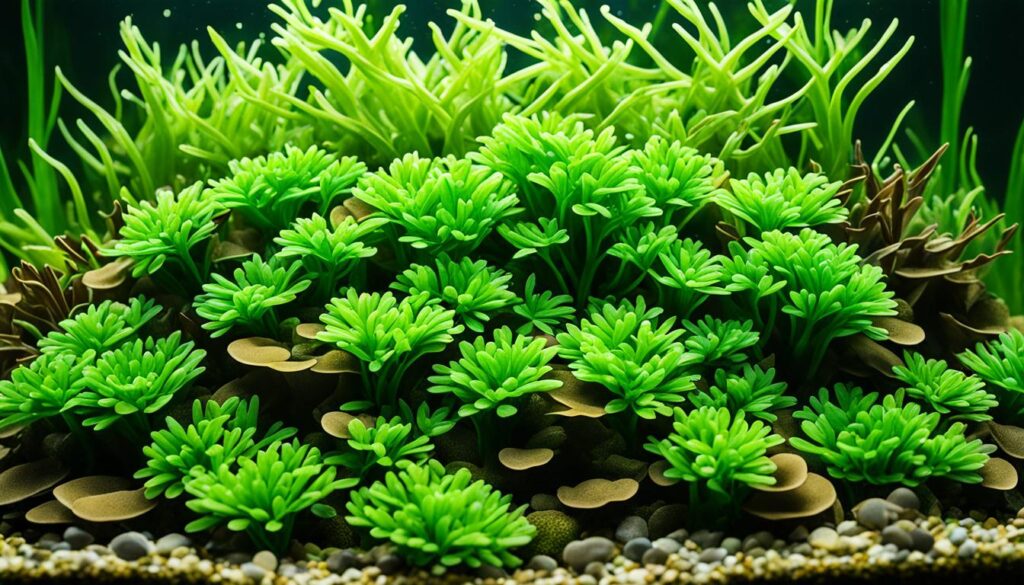
Overall, gravel substrates offer a natural and visually appealing look to your aquarium while providing a stable foundation for plant growth. By keeping an eye on debris accumulation and regularly vacuuming the gravel, you can ensure a clean and thriving aquatic ecosystem.
Advantages and drawbacks of using sand as a substrate
When it comes to aquarium substrates, sand provides a unique set of advantages and drawbacks. As a finer and softer version of gravel, sand offers several benefits that make it a popular choice for many aquatic enthusiasts.
Advantages of sand substrate
- Suitable for bottom-feeding fish: The fine particles of sand make it an ideal substrate for bottom-dwelling fish species. Fish with soft bellies, such as corydoras catfish, appreciate the softness of sand as it prevents injury to their delicate bellies.
- Naturalistic essence: Sand substrate enhances the naturalistic essence of your aquarium. It comes in various colors and sizes, allowing you to create stunning underwater landscapes that mimic natural habitats.
- Easy to clean: One of the advantages of sand is that debris tends to stay on top, making it easier to clean. By simply hovering a siphon over the sand, you can remove debris without disturbing the entire substrate.
Drawbacks of sand substrate
- Sand siphoning: While sand is easy to clean, it can also be easily sucked up by the siphon during water changes. Care must be taken to avoid removing excessive amounts of sand, as it can disrupt the substrate bed and cause unnecessary disturbance to the aquarium.
- Water clarity: The compactness of sand particles can sometimes affect water clarity. Fine sand can be easily stirred up, creating cloudy water if not handled carefully. Regular maintenance and thorough rinsing can help mitigate this issue.
- Plant growth limitations: The compact nature of sand can restrict the growth of plant roots. Unlike gravel, which provides more space for roots to spread, sand can hinder root growth and restrict nutrient absorption if not supplemented with root tabs or liquid fertilizers.
- Potential for anaerobic areas: Sand particles can lead to the formation of anaerobic areas within the substrate. These areas lack oxygen and can harbor harmful bacteria that produce toxins. Regular maintenance and avoiding overfeeding can help prevent the development of anaerobic conditions.
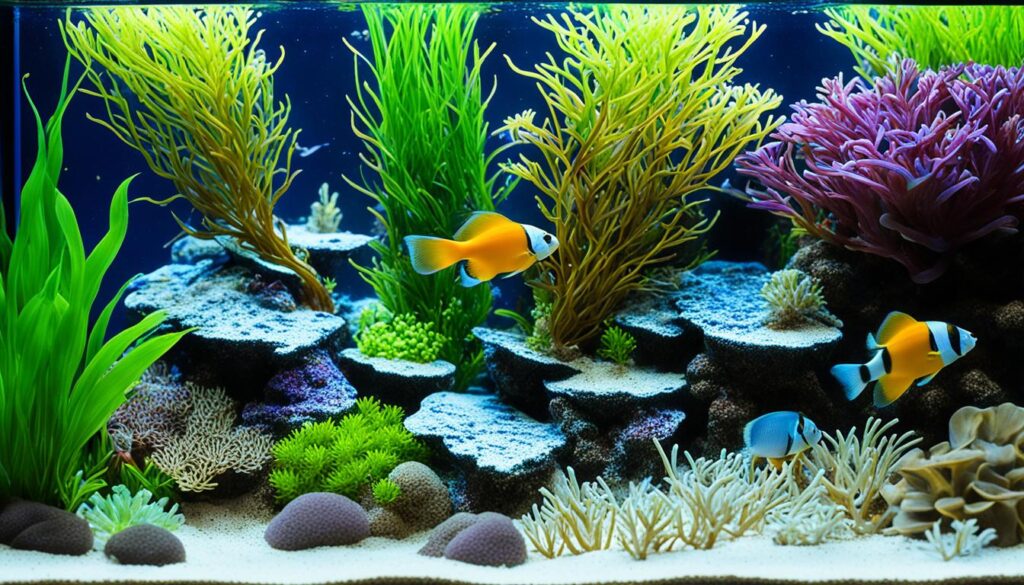
Despite these drawbacks, sand substrate remains a popular choice among aquarists due to its aesthetic appeal and suitability for certain fish species. By understanding its advantages and drawbacks, you can make an informed decision when selecting the ideal substrate for your aquarium setup.
Benefits and considerations of using clay-based substrate for plants
When it comes to creating a thriving aquascape, clay-based substrate, also known as aqua-soil or aquarium plant soil, offers numerous benefits. Whether you are an experienced aquarist or just starting out, understanding the advantages and considerations of using clay-based substrate can help you create an ideal environment for your aquatic plants.
Nutrient Absorption and Plant Growth
One of the key benefits of clay-based substrate is its ability to support the absorption of nutrients by plant roots. Aqua-soils are rich in essential elements that plants need for healthy growth. This allows your plants to flourish and thrive, creating a lush and vibrant underwater garden.
Promotes Beneficial Bacterial Growth
Aqua-soils not only provide essential nutrients for plants but also promote the growth of beneficial bacterial colonies. These bacteria break down organic debris, such as fish waste and uneaten food, into nutrients that plants can absorb. This natural process helps create a balanced ecosystem and maintains the overall health of your aquarium.
Alters Water Chemistry
Clay-based substrate has the unique ability to alter water chemistry, specifically lowering the pH levels. This makes it an excellent choice for aquarists who want to create an environment suitable for tropical fish and shrimp. However, it’s essential to consider the specific requirements of your fish species, as some may need additional minerals in their water.
Aquascaping and Aesthetic Appeal
In addition to its functional benefits, clay-based substrate is also favored by aquascapers for its visual appeal. Its rich color and texture add depth and dimension to your aquascape, creating a stunning underwater landscape that is sure to impress. Whether you are going for a natural or artistic look, clay-based substrate provides a solid foundation for your aquascaping endeavors.
However, it is important to note that clay-based substrate can be prone to clouding the water initially. This can be mitigated by rinsing the substrate thoroughly before adding it to your aquarium. Additionally, clay-based substrate may be more expensive compared to other substrate options, but the benefits it offers make it a worthwhile investment for serious aquarists.
| Benefits | Considerations |
|---|---|
| Supports nutrient absorption and plant growth | Can initially cloud the water |
| Promotes beneficial bacterial growth | Higher cost compared to other substrates |
| Alters water chemistry, lowering pH levels | May require additional mineral supplementation |
| Enhances aquascaping and aesthetic appeal |
Overall, clay-based substrate offers a range of benefits for your aquatic plants’ health and your aquascape’s beauty. By creating an ideal environment for nutrient absorption and promoting beneficial bacterial growth, clay-based substrate sets the stage for a thriving underwater garden. Consider the specific requirements of your fish species, monitor water chemistry, and enjoy the rewards of a vibrant and visually stunning aquarium.
Choosing the right aquarium substrate for your setup
When it comes to selecting the perfect aquarium substrate, several factors should be considered to ensure compatibility with your hardscape, plant and fish health, water chemistry, and aesthetic appeal. The decision between natural and artificial substrates will depend on your personal preferences and the specific requirements of your aquarium setup.
Natural substrates like gravel, sand, and clay-based soils offer an authentic look and provide ample support for plant growth. Gravel, with its varied grain sizes and colors, can create a visually appealing aquascape. Sand, on the other hand, offers a naturalistic essence and is a favorite choice for bottom-feeding fish. Additionally, clay-based substrates, such as aqua-soils or aquarium plant soil, are highly recommended for their ability to promote plant growth and nutrient absorption. They also support the growth of beneficial bacterial colonies that break down organic debris into essential nutrients.
While natural substrates offer aesthetic appeal and contribute to plant health, they may require more maintenance and monitoring of water parameters. For those seeking a hassle-free option, artificial substrates like crushed coral or limestone can alter the water chemistry to create specific environments suitable for certain fish species.
Ultimately, the right aquarium substrate should strike a balance between beauty and functionality. It should not only create a visually appealing aquascape but also provide a healthy environment for your plants and fish. Regular maintenance and monitoring of water parameters are essential to ensure optimal conditions for your underwater garden to thrive.
To help you make an informed decision, here’s a comparison of natural and artificial substrates:
| Natural Substrates | Artificial Substrates |
|---|---|
|
|
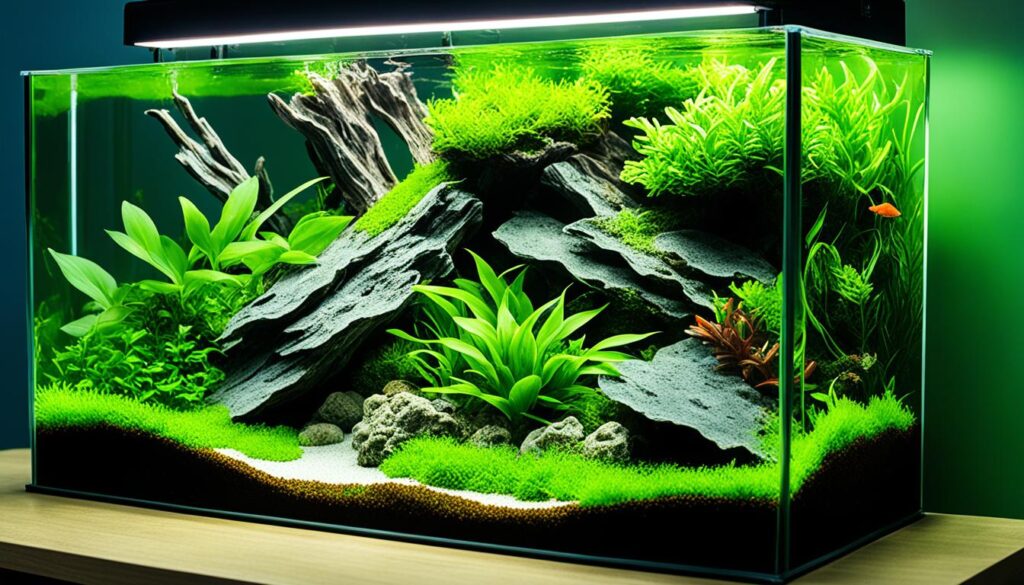
|

|
Each substrate type has its own advantages and considerations. Natural substrates offer a more authentic look, provide support for plant growth, and can create a thriving aquatic ecosystem. However, they may require more maintenance and regular monitoring of water parameters.
On the other hand, artificial substrates may simplify maintenance and alter water chemistry to create specific environments for certain fish species. However, they may not provide the same aesthetic appeal and may not support plant growth as effectively as natural substrates.
When deciding on the right aquarium substrate, it is important to weigh these factors against your personal preferences and the specific needs of your aquarium setup. By carefully considering hardscape compatibility, plant and fish health, water chemistry, and aesthetic appeal, you can choose a substrate that creates a balanced and visually pleasing aquascape.
Conclusion
Choosing the right substrate is crucial for the success of your aquarium plants and the overall health of your underwater garden. Whether you opt for gravel, sand, clay-based substrate, or decorative sand, each type has its advantages and considerations. It is important to select a substrate that not only supports optimal plant growth but also provides the necessary nutrients for thriving plants and maintains the water chemistry suitable for your fish species.
Regular maintenance and monitoring of water parameters are essential for creating a healthy aquatic ecosystem. By considering these factors and your personal preferences, you can achieve both aesthetic appeal and a thriving environment for your aquatic plants and fish. Remember to perform routine tasks such as vacuuming debris, siphoning detritus, and conducting regular water changes to ensure the longevity of your aquatic setup.
With the right substrate selection, you can create a beautiful and healthy underwater garden that not only enhances the visual appeal of your aquarium but also promotes the well-being of your fish and plant life. So take the time to research and make an informed decision about the substrate types that best suit your needs. With proper care and attention, you can enjoy a flourishing underwater paradise for years to come.
FAQ
What are the different substrate types for aquarium plants?
The different substrate types for aquarium plants include gravel, sand, clay-based substrate, and decorative sand.
What is the best substrate for a planted aquarium?
The best substrate for a planted aquarium depends on various factors such as plant type, fish species, and personal preferences. Gravel, sand, and clay-based substrate are commonly used substrates.
Can I use gravel or sand as a substrate for aquarium plants?
Yes, both gravel and sand can be used as substrates for aquarium plants. Gravel is often preferred for its natural appearance and anchoring capabilities, while sand provides a more naturalistic look.
What are the options for nutrient-rich substrates for aquarium plants?
Nutrient-rich substrates for aquarium plants include clay-based substrate, aqua-soil, and fertilizing substrate. These substrates provide essential nutrients for plant growth and support the absorption of nutrients through the roots.
How deep should the substrate be in a planted tank?
The depth of the substrate in a planted tank depends on the plant species and the desired effect. A base layer of 1-2 cm of nutrient-rich substrate is recommended, with a top layer of gravel or sand.
How do I choose the right substrate for aquatic plants?
When choosing the right substrate for aquatic plants, consider factors such as plant type, fish species, hardscape compatibility, water chemistry requirements, and aesthetic appeal.
What are the differences between natural and artificial substrate for aquarium plants?
Natural substrates like gravel, sand, and clay-based soil provide a more authentic look and support plant growth. Artificial substrates, such as crushed coral or limestone, can alter water chemistry and create a specific environment suitable for certain fish species.
